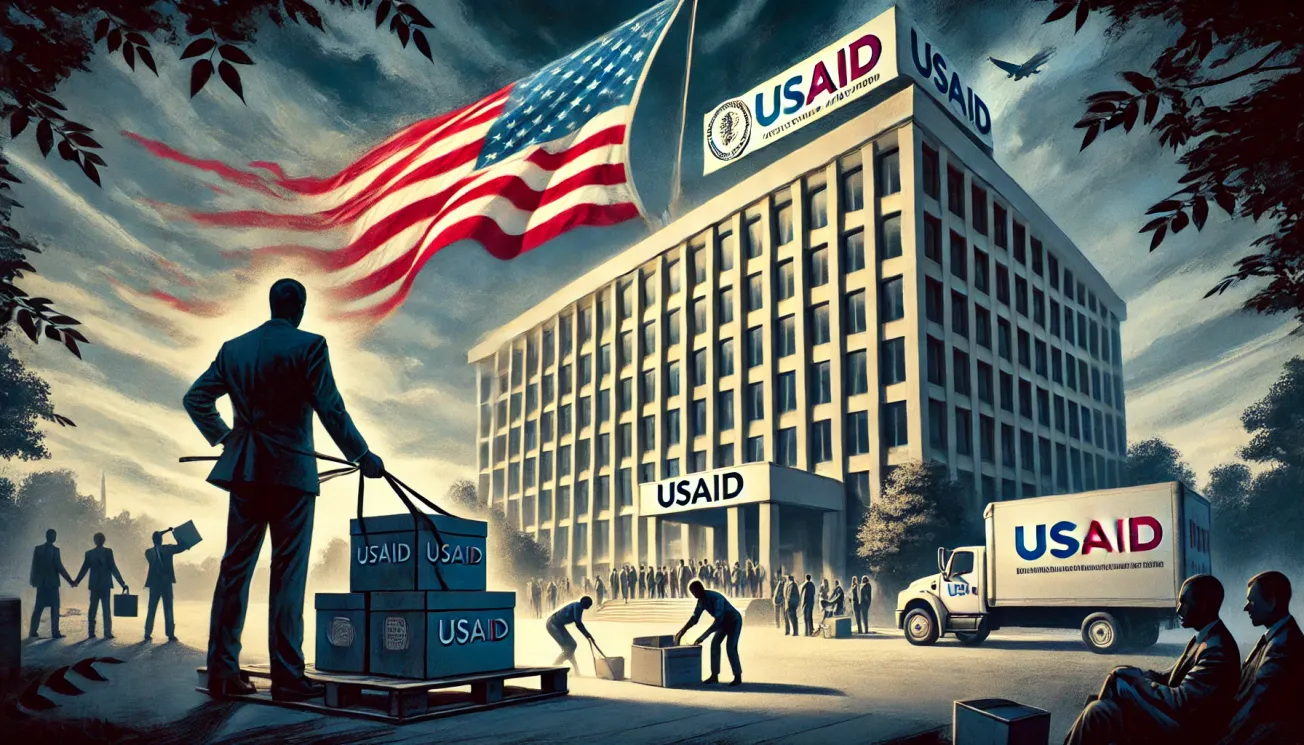Table of Contents
What if Foreign Aid Wasn’t Just About Helping?
When we hear "foreign aid," we imagine doctors saving lives, schools being built, and food reaching the starving. USAID, the U.S. government's international aid agency, promotes itself as a beacon of hope for struggling nations. But beneath the surface, USAID is more than a humanitarian organization—it is a strategic tool of American influence, subtly shaping economies, governments, and even conflicts.
Now, in 2025, President Donald Trump is taking a sledgehammer to the agency, drastically cutting its programs in an unprecedented move that could reshape America’s role in global affairs.
In this deep dive, we uncover how USAID has long operated as an extension of U.S. foreign policy, its role in global power struggles, and how Trump's efforts to dismantle it could change the future of American influence.
USAID: What It Is and How It Works
Founded in 1961 by President John F. Kennedy, USAID was designed to be America’s flagship agency for humanitarian aid and development. For decades, it has controlled billions of dollars in funding, operated in over 100 countries, and played a key role in U.S. diplomatic and military objectives.
- Who Controls It? While USAID is technically independent, the U.S. State Department exerts significant influence over its operations, ensuring it aligns with broader U.S. foreign policy goals.
- Who Pays for It? Congress controls its budget, which means political shifts in Washington can dramatically alter its priorities.
- What’s the Official Mission? USAID claims to promote economic development, democracy, global health, and humanitarian relief.
- What’s the Unofficial Reality? Behind the scenes, USAID is also a geopolitical weapon—shaping governments, reinforcing economic dependencies, and countering the influence of rival nations like China and Russia.
USAID as a Tool of Power: Aid with Strings Attached
USAID is not just about generosity—it's about leverage. Let’s break down how it subtly exerts influence worldwide.
A. Soft Power in Disguise
Foreign aid is rarely unconditional. Nations receiving USAID assistance are often expected to align with U.S. interests. Some examples:
- Trade & Market Reforms: Aid often comes with conditions requiring recipient nations to open their markets to U.S. businesses.
- Military Cooperation: Countries accepting U.S. assistance are often pressured to support American defense strategies.
- Political Compliance: Governments receiving USAID funds may be encouraged (or coerced) into adopting Western-style democratic institutions.
Case in Point: In 2013, the U.S. cut aid to Egypt after its military ousted a democratically elected government—demonstrating how USAID can be wielded as both a carrot and a stick.
B. Economic Leverage: Creating Dependence
USAID funding isn’t just free money—it often comes with strings that reinforce economic reliance on the U.S.:
- Conditional Aid: Recipients may be required to privatize industries, adopt free-market reforms, or enact policies favorable to U.S. corporations.
- Tied Assistance: Much of USAID’s budget is required to be spent on U.S. goods and services—effectively making it an indirect subsidy for American businesses.
Example: In Haiti, USAID aid often funds American contractors instead of Haitian businesses, ensuring that U.S. firms profit while local industries struggle.
C. Political Engineering & Regime Influence
USAID is deeply involved in election monitoring, democracy promotion, and governance reforms—but who benefits?
- Supporting Friendly Leaders: USAID has funded opposition groups in countries where governments oppose U.S. policies.
- Destabilization Efforts: Some governments claim USAID has worked to undermine regimes unfriendly to U.S. interests (e.g., Bolivia expelled USAID in 2013, accusing it of interference).
D. Strategic Deployments: USAID’s Role in Key Regions
- Latin America: Aid is tied to migration control, economic restructuring, and counter-narcotics operations.
- Africa: USAID helps counter China's Belt and Road Initiative (BRI) while funding health and infrastructure projects.
- Middle East: Used to rebuild post-war economies, but often favors U.S.-friendly political transitions.
- Eastern Europe: A key player in countering Russian influence, particularly in Ukraine since the 2014 revolution.
The Limits of USAID’s Power
USAID is powerful, but it is not all-powerful. Here’s where it faces pushback:
- Domestic Politics: A shift in U.S. leadership can drastically change USAID’s funding and priorities.
- Foreign Resistance: Countries like Russia, China, and Venezuela have expelled USAID, seeing it as a tool of U.S. meddling.
- Global Competition: China’s Belt and Road Initiative and Russia’s development programs are offering alternatives to USAID’s influence.
The Trump Administration’s Dismantling of USAID
A Radical Shift in Foreign Policy
In 2025, President Donald Trump, in his second term, has embarked on one of the most drastic cuts to USAID in history. Under the guise of reducing government inefficiency, his administration has:
- Slashed USAID’s budget by 83%.
- Eliminated nearly all democracy promotion programs.
- Shifted humanitarian aid responsibilities to the State Department and private contractors.
- Ordered the closure of USAID’s Washington, D.C. headquarters.
Massive Workforce Reductions
Thousands of USAID employees have been laid off, and its global operations have been scaled back significantly. Many projects have been abruptly halted, leaving communities and partner organizations scrambling for alternative funding.
Global Consequences
- HIV Treatment Crisis in Africa: The World Health Organization warns that millions of people could lose access to life-saving HIV treatments due to USAID program cuts.
- Ceding Influence to China and Russia: As USAID withdraws, China’s Belt and Road Initiative is expanding its footprint in Africa, Latin America, and Southeast Asia.
- Legal Challenges: A federal judge has ruled that Trump overstepped his authority, but no reinstatement of USAID funding has been ordered.
What’s Next for U.S. Foreign Aid?
- A More Isolationist Approach: Trump’s strategy suggests a pivot away from global development aid and toward a more transactional foreign policy.
- Rise of Private Sector Aid: More aid may now flow through private contractors and NGOs rather than directly from the U.S. government.
- A Void for Global Competitors to Fill: China and Russia are poised to capitalize on America's retreat from development assistance.
Final Thoughts: Aid or Empire?
USAID has never been just a humanitarian agency—it has always been a pillar of American geopolitical strategy. Now, with Trump’s cuts, the U.S. is stepping back from global development, raising critical questions:
- Will China fill the void left by the U.S.?
- Will humanitarian crises worsen as USAID withdraws?
- Is this the end of U.S. soft power?
The world is watching.






